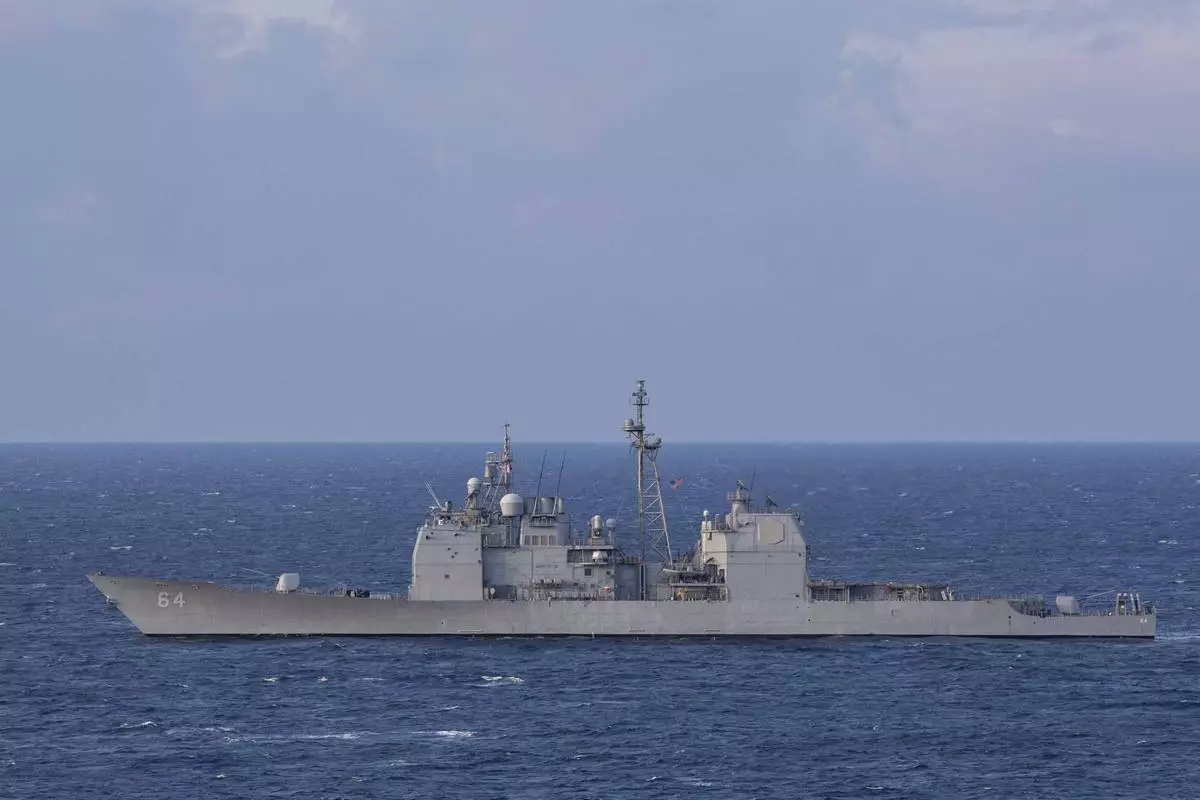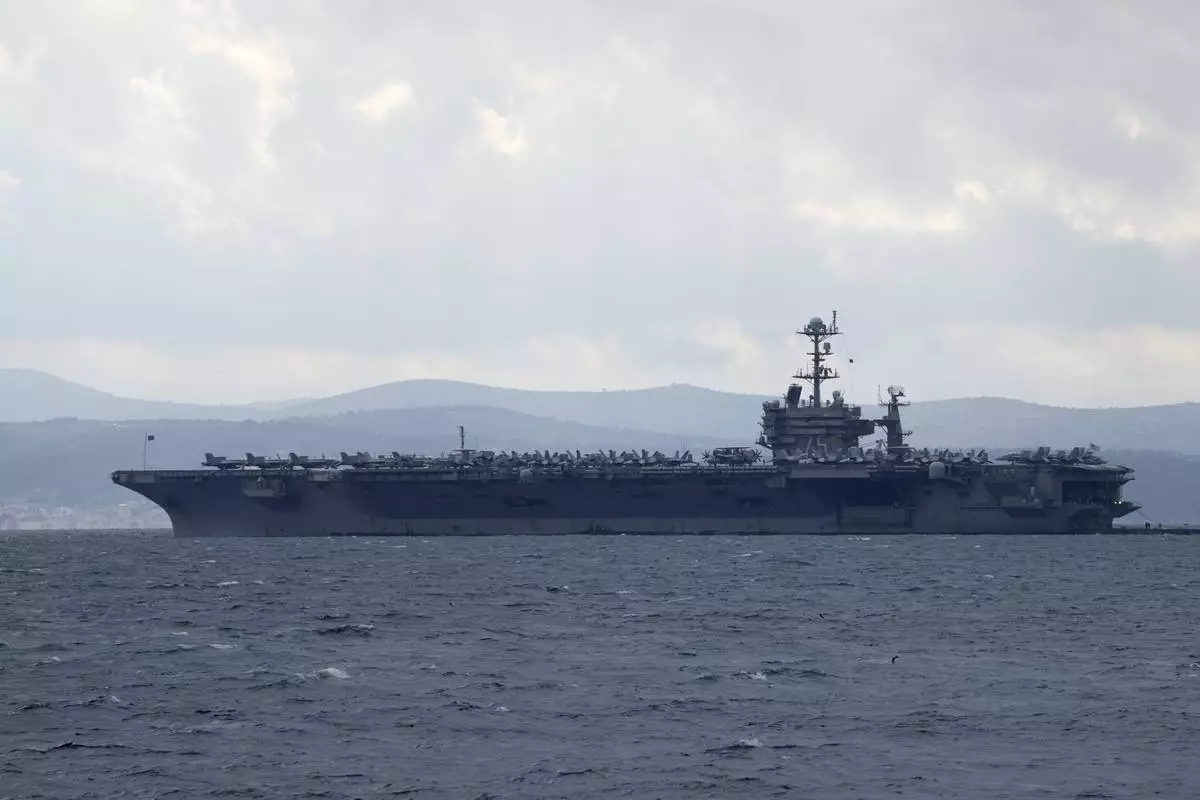An Indian Catholic priest returned to India on Thursday after being freed from 18 months of captivity by unknown kidnappers in Yemen.

Indian priest Tom Uzhannalil talks to media after meeting Indian foreign minister Sushma Swaraj in New Delhi, India, Thursday, Sept. 28, 2017. The Indian Catholic priest returned to India on Thursday after being freed from 18 months of captivity by unknown kidnappers in Yemen. (AP Photo/Manish Swarup)
The Rev. Tom Uzhunnalil arrived in the Indian capital and met with Prime Minister Narendra Modi and other government officials.
Speaking to reporters at the airport, Uzhunnalil thanked people who helped in his rescue.
Uzhunnalil had been working as a chaplain at a retirement home for more than four years in the southern Yemeni city of Aden when he was kidnapped during an attack by unknown gunmen in March 2016. The attack left 16 dead, including four nuns.

Indian priest Tom Uzhannalil talks to media after meeting Indian foreign minister Sushma Swaraj in New Delhi, India, Thursday, Sept. 28, 2017. (AP Photo/Manish Swarup)
Indian officials earlier this month announced the priest's rescue but gave no details.
The process leading to his release was also unclear, but the Vatican thanked the sultan of Oman and Uzhunnalil thanked leaders in India.
The priest said after his rescue that he didn't know his kidnappers' identities or affiliations and that he was not physically harmed during his detention. After his release he was flown to Rome for a "required rest and recuperation period in Vatican City," India's foreign ministry said in a statement Thursday.
Uzhunnalil comes from Ramapuram in the southern Indian state of Kerala.

Indian priest Tom Uzhannalil, third right, talks to Indian foreign minister Sushma Swaraj, left in New Delhi, India, Thursday, Sept. 28, 2017. The Indian Catholic priest returned to India on Thursday after being freed from 18 months of captivity by unknown kidnappers in Yemen. (AP Photo/Manish Swarup)
DUBAI, United Arab Emirates (AP) — Two U.S. Navy pilots were shot down Sunday over the Red Sea in an apparent “friendly fire” incident, the U.S military said, marking the most serious incident to threaten troops in over a year of America targeting Yemen's Houthi rebels.
Both pilots - who were on the same plane - were recovered alive after ejecting from the stricken aircraft, with one suffering minor injuries. But the shootdown underlines just how dangerous the Red Sea corridor has become, with ongoing attacks on shipping by the Iranian-backed Houthis despite U.S. and European military coalitions patrolling the area.
The U.S. military had conducted airstrikes targeting Yemen’s Houthi rebels at the time of the friendly fire incident, though the U.S. military’s Central Command did not elaborate on what the pilots' mission was and did not respond to questions from The Associated Press.
The F/A-18 shot down had just flown off the deck of the USS Harry S. Truman aircraft carrier, Central Command said. On Dec. 15, Central Command acknowledged the Truman had entered the Mideast, but hadn't specified that the carrier and its battle group was in the Red Sea.
“The guided-missile cruiser USS Gettysburg, which is part of the USS Harry S. Truman Carrier Strike Group, mistakenly fired on and hit the F/A-18,” Central Command said in a statement.
From the military's description, the aircraft shot down was a two-seat F/A-18 Super Hornet fighter jet assigned to the “Red Rippers” of Strike Fighter Squadron 11 out of Naval Air Station Oceana, Virginia.
It wasn't immediately clear how the Gettysburg could mistake an F/A-18 for an enemy aircraft or missile, particularly as ships in a battle group remain linked by both radar and radio communication.
However, Central Command said that warships and aircraft earlier shot down multiple Houthi drones and an anti-ship cruise missile launched by the rebels. Incoming hostile fire from the Houthis has given sailors just seconds to make decisions in the past.
Since the Truman's arrival, the U.S. has stepped up its airstrikes targeting the Houthis and their missile fire into the Red Sea and the surrounding area. However, the presence of an American warship group may spark renewed attacks from the rebels, like what the USS Dwight D. Eisenhower saw earlier this year. That deployment marked what the Navy described as its most intense combat since World War II.
On Saturday night and early Sunday, U.S. warplanes conducted airstrikes that shook Sanaa, the capital of Yemen which the Houthis have held since 2014. Central Command described the strikes as targeting a “missile storage facility” and a “command-and-control facility,” without elaborating.
Houthi-controlled media reported strikes in both Sanaa and around the port city of Hodeida, without offering any casualty or damage information. In Sanaa, strikes appeared particularly targeted at a mountainside known to be home to military installations. However, there were no images or information released regarding the strikes — which has happened previously when airstrikes hit vital facilities for the rebels.
Brig. Gen. Yahya Saree, a Houthi military spokesman, released a prerecorded statement hours later in which he claimed the rebels launched eight drones and 17 cruise missiles in their attack. He also claimed without offering any evidence that the Houthis shot down the F/A-18, likely following a pattern of him making exaggerated claims. During the Eisenhower's deployment, he repeatedly falsely claimed the carrier had been struck by Houthi fire.
The Houthis have targeted about 100 merchant vessels with missiles and drones since the Israel-Hamas war in the Gaza Strip started in October 2023 after Hamas’ surprise attack on Israel that killed 1,200 people and saw 250 others taken hostage.
Israel’s grinding offensive in Gaza has killed more than 45,000 Palestinians, local health officials say. The tally doesn’t distinguish between combatants and civilians.
The Houthis have seized one vessel and sunk two in a campaign that has also killed four sailors. Other missiles and drones have either been intercepted by separate U.S.- and European-led coalitions in the Red Sea or failed to reach their targets, which have also included Western military vessels.
The rebels maintain that they target ships linked to Israel, the U.S. or the United Kingdom to force an end to Israel’s campaign against Hamas in Gaza. However, many of the ships attacked have little or no connection to the conflict, including some bound for Iran.
The Houthis also have increasingly targeted Israel itself with drones and missiles, resulting in retaliatory Israeli airstrikes.
On Sunday, Israeli Prime Minister Benjamin Netanyahu said his country would act “forcefully” against the Houthis, as it has against other allies of Iran, “only in this case, we are not acting alone.”

CORRECTS YEAR TO 2024 - The Ticonderoga-class guided-missile cruiser USS Gettysburg (CG 64) steams in the Mediterranean Sea, Dec. 15, 2024. (Kaitlin Young/U.S. Navy via AP)

The Ticonderoga-class guided-missile cruiser USS Gettysburg (CG 64) steams in the Mediterranean Sea, Dec. 15, 2025. (Kaitlin Young/U.S. Navy via AP)

FILE - Aircraft carrier USS Harry S. Truman is moored near Split, Croatia, Feb. 14, 2022. (AP Photo/Darko Bandic, File)

FILE - A fighter jet maneuvers on the deck of the USS Dwight D. Eisenhower in the Red Sea, June 11, 2024. (AP Photo/Bernat Armangue, File)
















